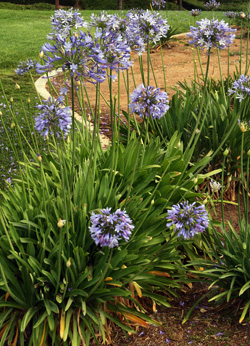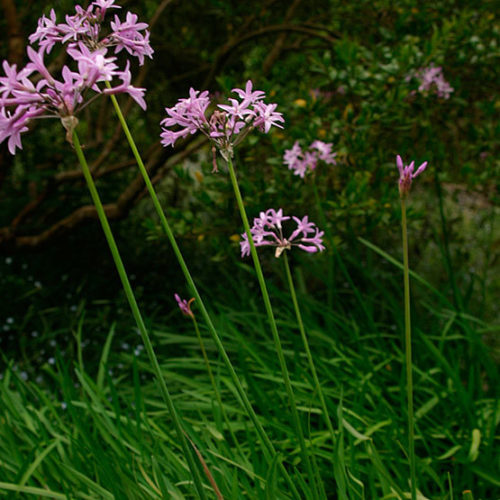Usual Agapanthus Troubles and Exactly How to Resolve Them
Usual Agapanthus Troubles and Exactly How to Resolve Them
Blog Article
Grasping the Art of Agapanthus Treatment: Essential Steps for Healthy And Balanced Growth and Dynamic Blooms
In the world of gardening, the growing of agapanthus stands as a gratifying endeavor for those that seek to nurture these stylish flowering plants. With their striking blossoms and elegant vegetation, agapanthus has actually caught the attention of garden enthusiasts worldwide. Nevertheless, accomplishing ideal growth and vivid blooms requires a nuanced technique that includes various necessary actions. From selecting the right selection to grasping trimming methods, the journey towards growing flourishing agapanthus plants is complex and holds the essential to opening the complete capacity of these agricultural treasures.

Choosing the Right Agapanthus Variety

When selecting the best Agapanthus range for your garden, consider elements such as climate viability, flower shade, and growth habit. Agapanthus, frequently referred to as Lily of the Nile or African lily, is available in a range of colors varying from shades of purple and blue to white. Pick a blossom color that matches your existing garden scheme to develop a harmonious landscape. Furthermore, think about the climate in your region to make certain the Agapanthus selection you choose can flourish in your particular conditions. Some varieties are a lot more forgiving of chilly temperatures, while others prefer warmer environments. Understanding the growth behavior of various Agapanthus ranges is critical for correct placement within your garden. Some selections have a clumping growth routine, perfect for containers or borders, while others have an even more spreading nature, suitable for ground cover or mass plantings. By carefully evaluating these factors, you can pick the best Agapanthus variety to boost the charm of your garden.
Suitable Planting Problems
Taking into consideration the optimal environmental requirements is crucial for successful Agapanthus growing. Agapanthus plants are delicate to cool temperatures and need to be shielded from frost throughout wintertime months.
To guarantee healthy and balanced growth and lively blossoms, plant Agapanthus light bulbs at a depth of about 2-4 inches and space them 8-12 inches apart. Adding raw material, such as garden compost, to the dirt can enhance drainage and fertility, promoting durable origin development. Mulching around the base of the plants helps maintain wetness and subdues weed development. Normal watering is vital, particularly throughout the expanding period, to maintain the soil constantly damp however not soaked.
Watering and Feeding Tips
Preserving appropriate moisture levels and supplying crucial nutrients are vital elements in the care regimen for Agapanthus plants. When it involves sprinkling Agapanthus, a knockout post it is critical to strike an equilibrium. If overwatered, these plants like regularly moist dirt yet are prone to root rot. During the growing period, water deeply as soon as a week, making sure the dirt is well-draining to stop waterlogging. In hotter environments or throughout durations of dry spell, more frequent watering might be needed to keep the dirt uniformly moist. However, minimize watering in the winter to stop water logged conditions.
Fertilizing Agapanthus is crucial for promoting healthy development and respected blossoms. Apply a well balanced plant food, such as a 10-10-10 formula, in the early spring as new growth arises. By adhering to these watering and feeding tips, you can ensure your Agapanthus plants grow and create lively, durable blooms.
Trimming Strategies for Agapanthus
Trimming Agapanthus plants at the appropriate times and with appropriate techniques is crucial for preserving their health and wellness and advertising optimum development and blooming. The optimal time to trim Agapanthus remains in late winter months or early springtime before new growth emerges. Begin by eliminating any yellowing or dead fallen leaves near the base of the plant. Cut them as close to the ground as possible without damaging the arising shoots.
Deadheading invested blossoms can likewise reroute the plant's energy into producing even more flowers rather than setting seeds. If you desire to accumulate seeds for proliferation, leave some flowers to fully grown and completely dry on the plant.
Bear in mind to make use of tidy, sharp devices to make specific cuts and minimize the risk of presenting conditions. Agapanthus. Regular trimming will certainly help maintain your Agapanthus looking healthy and balanced and useful reference neat while ensuring a plentiful screen of gorgeous flowers
Handling Common Parasites and Illness
After ensuring appropriate trimming techniques for Agapanthus, it is crucial to deal with usual insects and illness that can influence the health and vigor of these plants. One typical parasite that affects Agapanthus is the Agapanthus gall midget.
Additionally, Agapanthus plants can suffer from origin rot if they are grown in inadequately draining pipes soil. By being attentive and taking punctual activity versus parasites and illness, you can assist your Agapanthus plants prosper and generate lively flowers. Agapanthus.

Verdict
Finally, mastering the art of agapanthus care entails choosing the best selection, offering suitable planting conditions, correct watering and fertilizing, appropriate pruning strategies, and attending to common bugs and diseases. By following these check my reference essential actions, you can make sure healthy development and dynamic flowers for your agapanthus plants. Bear in mind to consistently keep track of and maintain your plants to promote their general wellness and long life.
To ensure healthy growth and lively flowers, plant Agapanthus bulbs at a depth of about 2-4 inches and space them 8-12 inches apart. By adhering to these watering and feeding pointers, you can guarantee your Agapanthus plants grow and create lively, long-lasting flowers.
One common bug that affects Agapanthus is the Agapanthus gall midge. Furthermore, Agapanthus plants can experience from origin rot if they are grown in improperly draining dirt. By following these necessary steps, you can make certain healthy development and dynamic flowers for your agapanthus plants.
Report this page